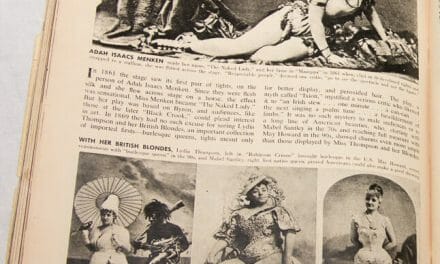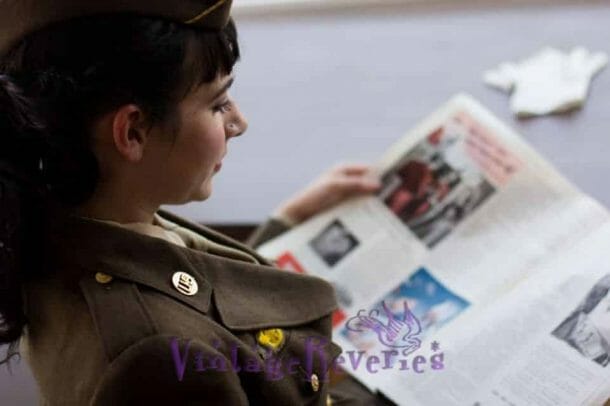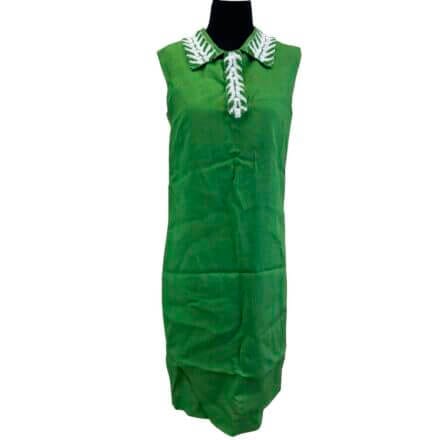
1920s Ready To Wear Fashion Show – by the St. Louis Wholesale Garment Association

What a fascinating glimpse into the history of ready-to-wear clothing in America—and St. Louis’s little-known contributions to the fashion world! This beautifully illustrated spread begins the program and schedule for the 1924 St. Louis Fashion Pageant, a captivating celebration of ready-to-wear clothing presented at Forest Park, August 7–24. The vibrancy of this fashion show not only highlights a pivotal moment in making stylish, mass-produced clothing accessible to everyday Americans but also illuminates St. Louis’s position as a burgeoning fashion hub of the era.
The introduction from the original program reads:
“This gorgeous style spectacle portrayed by beautiful live models will be produced in the Municipal Theatre, Forest Park, St. Louis. Come and meet the most prominent merchants and buyers who have accepted St. Louis Ready-to-Wear Styles as authentic and profitable. Coats, Suits, Dresses, Waists, Blouses, Skirts, Petticoats, Knitted Outerwear, Bungalow Aprons, House Dresses, Muslin and Silk Underwear.”
The art deco border, brimming with fashionable silhouettes, immediately sets the tone for the glamour that awaited attendees. These chic geometric designs became iconic of the roaring ’20s, an era marked by bold self-expression and rapid cultural transformation. The fashion show’s setting in Forest Park—home to landmarks like the Municipal Opera Theatre—lent an air of grandeur and accessibility to the showcase. This wasn’t just a fashion show; it was a statement about the growing importance of collective identity and shared aesthetics in a time of profound industrial and social change.
A Revolution in Clothing: St. Louis as a Ready-to-Wear Pioneer
At the heart of this event is the St. Louis Wholesale Garment Association, which orchestrated the fashion pageant to highlight the city’s thriving garment industry. Often overshadowed by cities like New York or Paris, St. Louis quietly earned the moniker “The Garment City” during the early 20th century for its concentration of garment manufacturers and distributors. This ready-to-wear revolution was a significant leap forward in fashion, democratizing style and cutting the reliance on bespoke tailoring.
Before the advent of ready-made clothing, most garments were custom-made by hand or at home. Purchasing pre-made dresses and blouses was seen as avant-garde yet potentially impersonal. However, the development of “standardized sizing” alongside new manufacturing techniques and distribution networks changed everything. St. Louis, with its central location and industrial prowess, became a key player. Many of the businesses featured in the 1924 show were concentrated in the downtown area on Washington and Locust Avenues, solidifying this part of the city as a hotspot for the garment trade.
The fashion on display at the 1924 St. Louis Fashion Pageant reflected the era’s liberated, modern spirit. Women were stepping out of corsets and into silhouettes that celebrated movement and simplicity. Dresses and skirts were shorter, waists dropped, and designs began to incorporate functionality without sacrificing flair. St. Louis designers specialized in practical yet stylish pieces, catering to a growing middle-class market with garments like:
- Smart coats and suits for professional women.
- Stylish dresses that captured the Art Deco and jazz aesthetics of the time.
- Comfortable house dresses, aprons, and undergarments that blended affordability with elegance.
Forest Park’s Municipal Theatre provided a grand stage where participating St. Louis businesses could present their latest styles. More than a marketing event, it was also a public declaration that ready-to-wear fashion was here to stay. St. Louis’s manufacturing scene celebrated its capacity to deliver quality, on-trend fashions at scale to the everyday consumer.
The Allure of Mass-Produced Elegance
The 1920s marked the rise of consumer industries redefining how Americans viewed mass-manufactured goods. Once regarded as inferior to bespoke clothing, ready-to-wear fashion began to shine as mass appeal and convenience aligned perfectly with rapidly changing societal values. Women of the period—exemplified by the flapper—embraced modernity and individuality, paradoxically finding it in garments that could be worn by many. Ready-to-wear became a symbol of progress, allowing women to affordably experiment with fashion while embracing evolving gender roles and lifestyles.
According to the National Institute of Standards and Technology, “Ready-made articles of clothing were portrayed as modern and fashionable during a time when the new consumer industries were rapidly redefining the way Americans viewed mass-manufactured goods.” These garments were no longer seen as a loss of individuality but rather as a source of empowerment and ease. St. Louis’s 1924 Fashion Pageant was a showcase of this modern outlook, cementing the city’s place in the history of American fashion.
The Legacy of St. Louis Fashion
The featured businesses at the Fashion Pageant primarily hailed from Washington and Locust Avenues—today a historic reminder of this once-booming garment district. Though many of the original manufacturers have long since disappeared, the memory of their contribution to shaping American fashion remains. The ready-to-wear clothing industry had a ripple effect, championing not just new clothing designs but also supporting the rise of department stores, mail-order catalogs, and national advertising campaigns.
For the people of St. Louis, this event marked a moment of immense civic pride. The city’s thriving garment district wasn’t just producing clothes; it was exporting a way of life—one all about ease, modernity, and style.
By the 1920s, St. Louis stood as a testament to the possibilities of industrial innovation in fashion, a chapter in history that is rich with untold stories. Paging through the spread of the 1924 show offers not only an appreciation of art deco aesthetics but also an understanding of how American fashion adapted to, and shaped, the zeitgeist of the roaring twenties.
A Stroll Through Fashion History
Attending the 1924 Fashion Pageant in Forest Park would have felt like stepping into the future. The promise of accessible fashion, the glitz of live models, and the artistry of St. Louis-based designers reflected the energy and optimism of the Jazz Age. For a city known for its breweries and trading industry, its ascent into fashion prominence added yet another layer to its diverse identity.
The legacy of events like the 1924 St. Louis Fashion Pageant reminds us of how far we’ve come—and just how revolutionary the concept of ready-to-wear clothing truly was. Next time you zip up a dress or button a shirt off the rack, remember the innovation and artistry behind the mass-manufacturing revolution and the “Garment City” that helped make it possible.
For more history on ready-to-wear fashions, the National Institute of Standards and Technology offers a fascinating dive into the journey of mass-produced clothing: NIST Fashion History.


















You must be logged in to post a comment.